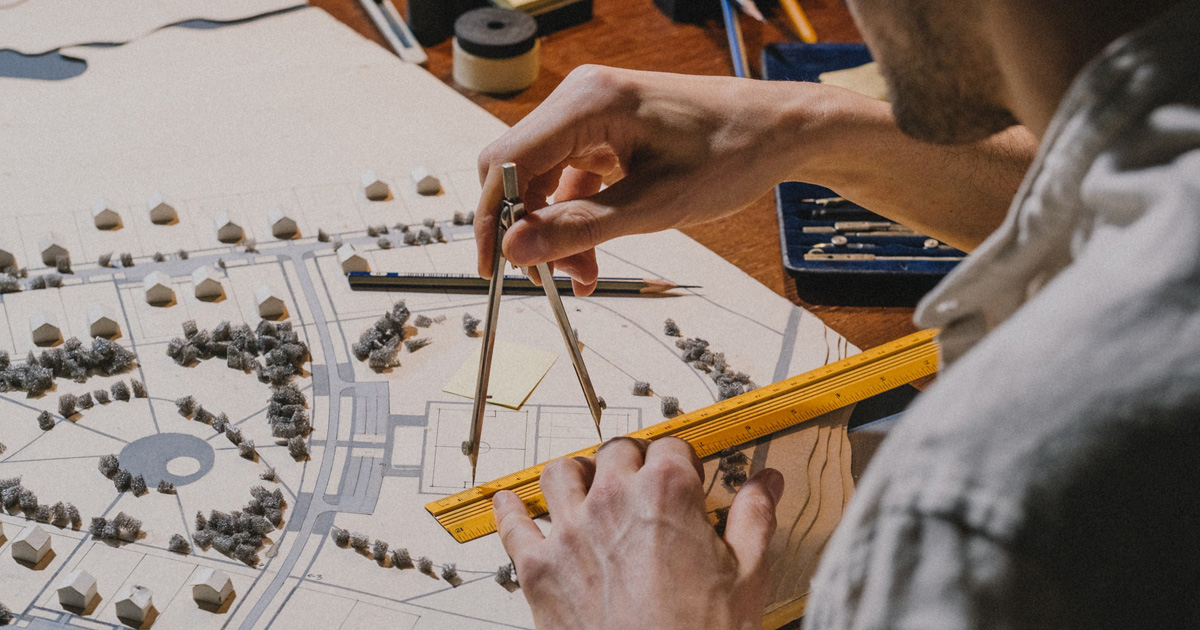Architect Checklist for Upcoming Commercial Projects
Architect Checklist for Upcoming Commercial Projects
Blog Article
Discover the Crucial Skills and Qualities Every Architect Need To Possess
As a designer, you understand that success in your field surpasses just technical skills. It's about blending creative thinking with usefulness, promoting partnership, and managing jobs efficiently. Each top quality plays a crucial function in your capability to create spaces that motivate and operate well. What are the certain skills that can really set you apart? Let's discover the important characteristics every Architect should cultivate to flourish in this ever-evolving career.
Creativity and Technology
Imagination and advancement are at the heart of style, driving the layout of spaces that inspire and work effortlessly. You'll constantly discover brand-new products, strategies, and technologies to boost your styles.
You'll likewise attract ideas from various resources-- nature, art, and even daily life can spark fresh ideas. This ability to blend creative thinking with usefulness enables you to resolve intricate troubles, ensuring your styles satisfy both useful and aesthetic demands.
Solid Communication Skills
While developing impressive spaces needs creativity, solid communication skills are just as critical for architects. You need to communicate your ideas plainly to clients, service providers, and employee. Listening is equally as vital; recognizing your customer's vision assists you develop styles that genuinely meet their needs.
You'll commonly have to describe complicated concepts in a way that's very easy to comprehend, whether you exist a proposition or going over products. Efficient interaction cultivates partnership, ensuring everybody gets on the exact same page throughout the job.
Building partnerships is essential, too. When you develop depend on and relationship, customers are most likely to share their issues and comments, resulting in far better results.
Finally, don't undervalue the power of body language and aesthetic help. They can boost your message and make your presentations much more interesting. Solid interaction skills not just boost your designs yet also reinforce your professional connections in the architectural world.
Technical Proficiency in Layout Software Application
As you navigate the ever-evolving world of design, grasping design software application ends up being crucial for translating your creative concepts into substantial strategies. Acquainting yourself with programs like AutoCAD, Revit, and SketchUp will not just enhance your design capabilities yet likewise improve your workflow. These devices allow you to develop thorough drawings, 3D models, and also simulations that can aid you imagine and provide your concepts better.
Exceling in these software application applications also improves your collaboration with designers and professionals, as everyone can work from the exact same electronic foundation. In addition, your capacity to adjust to brand-new innovations will certainly keep you competitive in the area. Frequently updating your abilities and checking out new attributes can establish you besides your peers, ensuring your styles are specific and innovative. Eventually, technical proficiency in design software program is a cornerstone of successful style, aiding you bring your visions to life.
Comprehending of Design Concepts

Understanding design concepts additionally allows you to anticipate potential difficulties early in the style procedure. You can make educated choices that boost your layouts when you're aware of just how different products act under different conditions. Your styles should not just be visually pleasing yet sustainable and additionally useful.
Additionally, a solid understanding of design concepts enables you to introduce within restrictions. You can press imaginative borders while still adhering to safety and security criteria. Ultimately, this understanding enhances your architectural technique and establishes you apart in an affordable area.
Task Management Abilities
Efficient project monitoring abilities are essential for designers, enabling you to look after all aspects of a project from conception to completion. You'll require to collaborate with numerous stakeholders, consisting of engineers, contractors, and customers, guaranteeing everybody's on the same web page. Setting clear goals, timelines, and budget plans is essential; it assists you keep the job on track and within scope.
As an engineer, you must also be skilled in danger monitoring, recognizing potential problems prior to they escalate. Strong interaction skills are important, enabling you to articulate your vision and encourage your group. You'll profit from being arranged and detail-oriented, as this aids simplify procedures and stay clear of costly delays.
Additionally, adaptability is key; jobs frequently advance, and being versatile permits you to respond Read Full Article successfully to adjustments. Inevitably, your job monitoring skills can significantly impact the success of your architectural ventures, guaranteeing you supply top quality outcomes on time and within budget.
Attention to Information
While taking care of jobs is vital, your attention to information can make a considerable difference in the quality of your work. Every line you attract, every product you choose, and every small requirements you keep in mind contributes to the total success of a project. You require to be precise, guaranteeing that your styles not just meet aesthetic criteria but additionally abide by constructing guidelines and codes.
Missing out on even a little detail can lead to expensive revisions or safety concerns down the line. By cultivating a keen eye for detail, you improve your ability to spot prospective troubles prior to they intensify. This watchfulness not just conserves you time and resources however likewise constructs your reputation as a trustworthy Architect. Bear in mind, it's frequently the smallest details that elevate a job from excellent to exceptional. Welcome this ability, and allow it lead your design process, making sure that your vision is performed faultlessly.
Adaptability and Problem-Solving Abilities
As an engineer, you'll frequently encounter unexpected modifications in style and task needs. Your capacity to accept these changes and locate innovative remedies is crucial for success. Remaining flexible in your strategy not only enhances your analytical abilities yet also keeps your jobs on the right track.
Welcoming Adjustment in Layout
Embracing adjustment in layout is necessary for architects, especially when guiding developing client needs and emerging modern technologies. You need to grow flexibility, as projects usually change instructions based on new insights or restrictions. Being open to alter enables you to check out innovative strategies and create solutions that reverberate with your customers.
When confronted with obstacles, your problem-solving abilities enter into play. You'll commonly need to reassess principles and readjust intend on the fly, making certain that the last end result lines up with the customer's vision while meeting safety and regulative standards. By being resourceful and flexible, you not only boost your layouts however also build depend on with your customers, proving that you can navigate the complexities of modern architecture successfully.
Innovative Solutions to Challenges

Versatility in Project Management
While maneuvering the complexities of task monitoring, adaptability comes to be an essential asset for architects. You'll often encounter unanticipated obstacles, from style modifications to budget constraints, calling for fast thinking and adaptability. Welcoming modification allows you to pivot your strategies and locate ingenious services, ensuring task success.
Strong analytical skills are essential; they enable you to assess scenarios, evaluate options, and apply efficient solutions on the fly. When dealing with diverse teams, being open to responses and alternative concepts promotes cooperation and stimulates creativity.
Often Asked Concerns
What Educational History Is Required to Become a Designer?
To become an architect, you'll need at the very least a specialist degree in design, typically a Bachelor's or Master's. Getting and finishing an internship licensure through tests is important for your profession development.
How Vital Is Networking in the Architecture Field?
Networking's crucial in architecture. It assists you construct connections, discover work chances, and gain insights from seasoned experts. By attaching with others, you improve your profession leads and stay upgraded on sector trends and advancements.
What Are the Usual Occupation Paths for Architects?
Usual career courses for architects include style roles in companies, task monitoring, urban preparation, and specialized areas like sustainable design. Architect. You might likewise check out training or consulting, depending on your rate of interests and experiences
Just How Can Engineers Remain Updated With Industry Patterns?
To remain upgraded with sector fads, you need to consistently go to conferences, sign up with specialist associations, sign up for relevant magazines, and engage with on the internet discussion forums. Connecting with peers also aids you gain insights you can check here into emerging growths in architecture.
What Duty Does Sustainability Play in Modern Architecture?
Sustainability shapes contemporary design by stressing power effectiveness, resource conservation, and green products. You'll produce areas that decrease ecological effect, enhance owner health, and respond to climate difficulties, making your styles more impactful and relevant.
While making impressive areas requires creative thinking, solid communication skills are just as vital for designers. Strong communication skills not just raise your layouts however also reinforce your expert partnerships in the architectural globe.
Efficiency in style software lays the groundwork for a much deeper understanding of design concepts, which is important for engineers.As an architect, you'll typically encounter unanticipated adjustments in design and project needs.Embracing change in layout is essential for architects, particularly when steering progressing customer demands and emerging modern technologies.
Report this page